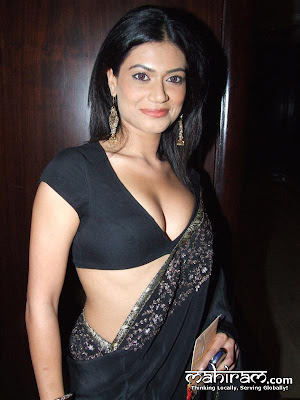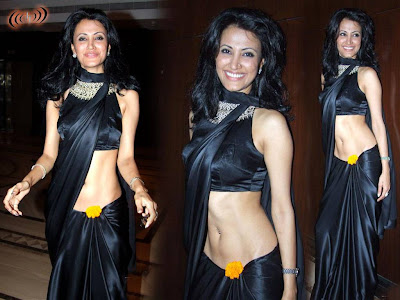Kinds of Indian & Pakistani Embroidery - TYPES OF EMBROIDERY
Embroidery has traditionally enhanced a dress. A look at the various types of threadwork
As far as the world of design is concerned, embroidery is the backbone of India and Pakistan. It has left an indelible imprint even on international fashion like Escada, Lingara and Ferra have their ensembles embroidered in India. Do we know enough about our own embroideries and how to use them efficiently? The thoughtful use of embroidery can enhance an ensemble, and take it from the mundane to the extraordinary. Some Indian embroideries that can do wonders for an outfit are:
Aabla: Mirror work which has its roots in Rajasthan and Kutch.
Aari: Embroidery done on a cot. Also known as khatla work aari originated in Barabanki.
Badla: Flat metallic wire, silver or gilt wire embroidery.
Butas and Butis: Motifs composed of floral forms fitted into paisley shapes derived from the Mughal era.
Lari: Fine quality gold thread embroidery found in Bareilly , Benaras ( Varanasi ), Lucknow and Agra. These days silver zari is equally popular.
Phool Patti Work: Applique work from Aligarh where usually organdi or other fabric cutouts in floral and leaf motifs are affixed on to a plain fabric sometimes in tandem with silver tilla embroidery.
Chikan Work: Originating from Lucknow this involves a technique of finding separated warp and weft threads for a textural effect.
Taipchi: Darn stitch on muslin.
Khatwa: Inverted satin stitch on muslin.
Murri or Phanda: Satin stitch knots.
Jaali: Network.
Phulkari: Flower motifs, geometric patterns, surface satin stitching using silk floss threads. Phulkari has its origin in Punjab.
Zardosi: Leaf-scroll worked in gold and silver thread on silk, satin, velvet and other rich fabrics. Zardosi is also combined with Dabka work and is originally from Lucknow.
Mokaish: Silver dots strewn all over is Mokaish work.
Kashida: Mix of textile embroidery and printing.
Kantha Work: Originally from Bangladesh, it resembles the running stitch.
Ek taar: Single thread embroidery used in tandem with crystals.
Resham: Fine silk thread-work.
Bead and Crystal Work: Resham work is teamed with beads, baggets, diamantes, rhinestones and Swarowski crystal.
Sitara Work: Sequins are embroidered into the fabric.
Kinds of Indian & Pakistani Embroidery at http://chudidaar.blogspot.com/
As far as the world of design is concerned, embroidery is the backbone of India and Pakistan. It has left an indelible imprint even on international fashion like Escada, Lingara and Ferra have their ensembles embroidered in India. Do we know enough about our own embroideries and how to use them efficiently? The thoughtful use of embroidery can enhance an ensemble, and take it from the mundane to the extraordinary. Some Indian embroideries that can do wonders for an outfit are:
Aabla: Mirror work which has its roots in Rajasthan and Kutch.
Aari: Embroidery done on a cot. Also known as khatla work aari originated in Barabanki.
Badla: Flat metallic wire, silver or gilt wire embroidery.
Butas and Butis: Motifs composed of floral forms fitted into paisley shapes derived from the Mughal era.
Lari: Fine quality gold thread embroidery found in Bareilly , Benaras ( Varanasi ), Lucknow and Agra. These days silver zari is equally popular.
Phool Patti Work: Applique work from Aligarh where usually organdi or other fabric cutouts in floral and leaf motifs are affixed on to a plain fabric sometimes in tandem with silver tilla embroidery.
Chikan Work: Originating from Lucknow this involves a technique of finding separated warp and weft threads for a textural effect.
Taipchi: Darn stitch on muslin.
Khatwa: Inverted satin stitch on muslin.
Murri or Phanda: Satin stitch knots.
Jaali: Network.
Phulkari: Flower motifs, geometric patterns, surface satin stitching using silk floss threads. Phulkari has its origin in Punjab.
Zardosi: Leaf-scroll worked in gold and silver thread on silk, satin, velvet and other rich fabrics. Zardosi is also combined with Dabka work and is originally from Lucknow.
Mokaish: Silver dots strewn all over is Mokaish work.
Kashida: Mix of textile embroidery and printing.
Kantha Work: Originally from Bangladesh, it resembles the running stitch.
Ek taar: Single thread embroidery used in tandem with crystals.
Resham: Fine silk thread-work.
Bead and Crystal Work: Resham work is teamed with beads, baggets, diamantes, rhinestones and Swarowski crystal.
Sitara Work: Sequins are embroidered into the fabric.
Kinds of Indian & Pakistani Embroidery at http://chudidaar.blogspot.com/




















































